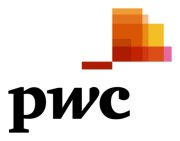After ten quarters of continuous RevPAR declines, performance finally turned around in the fourth quarter of 2017. RevPAR increased 1.4 percent, driven entirely by resilient occupancy levels. While supply growth showed signs of deceleration, growth in average daily rate remained elusive.
Looking back through 2017, top line lodging performance in Manhattan was all about room night demand. Despite an increase in supply of 2.6 percent, lodging demand grew at a 3.7 percent rate, driving a second year of occupancy growth. However, maintaining pricing power proved challenging in the face of this new supply, resulting in a 1.6 percent decline in average daily rate (“ADR”). Overall, while revenue per available room (“RevPAR”) decreased 0.5 percent, this was a marked improvement from the 2.9 and 2.4 percent declines reported in 2015 and 2016, respectively.
In Q4, higher-priced hotels in the Luxury class reported sizeable increases in occupancy levels of 5.6 percent, although ADR remained flat. However, while RevPAR for Luxury hotels increased meaningfully in the quarter, it grew just 0.7 percent for the year. Upper Upscale hotels reported a moderate increase in occupancy, coupled with modest growth in ADR. For the year, these hotels grew RevPAR by 1.0 percent, the strongest performance of all of the classes. Upscale and Upper Midscale hotels reported mixed results. Hotels in the Upscale category grew occupancy at the expense of ADR in the quarter, resulting in a tepid increase in RevPAR of 0.1 percent. Conversely, hotels in the Upper Midscale category were the only class to report a decrease in occupancy, while also reporting the strongest increase in ADR, at 1.1 percent. For the year, RevPAR for Upscale hotels decreased 2.6 percent, while RevPAR for Upper Midscale hotels increased 0.2 percent.
In the Q4, four of the five Manhattan submarkets reported increases in RevPAR, driven largely by increases in occupancy. Lower Manhattan performed the best, increasing RevPAR by 4.0 percent in the quarter, despite a 1.0 percent decline in ADR. Upper Manhattan was able to increase both occupancy and ADR levels, resulting in a 2.9 percent increase in RevPAR. Midtown West was the only submarket to experience a decline in RevPAR for the quarter, with occupancy levels decreasing 0.6 percent and ADR levels increasing only marginally, at 0.1 percent. Midtown East reported mixed results for occupancy and ADR, though RevPAR increased 2.0 percent. Midtown South saw a 1.7 percent increase in occupancy during the quarter, coupled with a relatively flat ADR (up 0.1 percent). For the year, Upper Manhattan and Lower Manhattan increased RevPAR by 1.2 and 0.3 percent, respectively, supported entirely by increases in occupancy. The remaining submarkets recorded varying decreases in RevPAR. ADR was a consistent challenge for the Manhattan market, with all five submarkets recording declines in ADR ranging from 0.8 to 4.2 percent in 2017.
Both full-service and limited-service hotels grew RevPAR in Q4, unsurprisingly driven entirely by strength in occupancy. Full-service hotels reported a decrease in ADR of 0.4 percent, while limited-service hotels reported a decline of 0.2 percent. For the year, RevPAR for full-service hotels decreased by 0.7 percent, while limited-service hotels saw an increase of 0.6 percent.
In Q2 and Q3 of 2017, we noted that chain-affiliated hotels had outperformed against independent hotels, in a reversal of recent trending. However, in Q4, independent hotels once again outperformed chain-affiliated hotels, growing occupancy by 2.2 percent and ADR by 0.4 percent, for a resulting RevPAR increase of 2.6 percent. Chain-affiliated hotels were also able to grow occupancy, by 1.5 percent, though ADR decreased slightly, resulting in a RevPAR increase of 1.4 percent. For the year, performance growth metrics for chain-affiliated and independent hotels were nearly identical. Occupancy grew 1.0 and 1.1 percent, with ADR declining 1.2 and 1.1 percent, respectively. For 2017, RevPAR decreased 0.1 percent for chain-affiliated hotels and was flat for independent hotels.
Read the whole report here.


